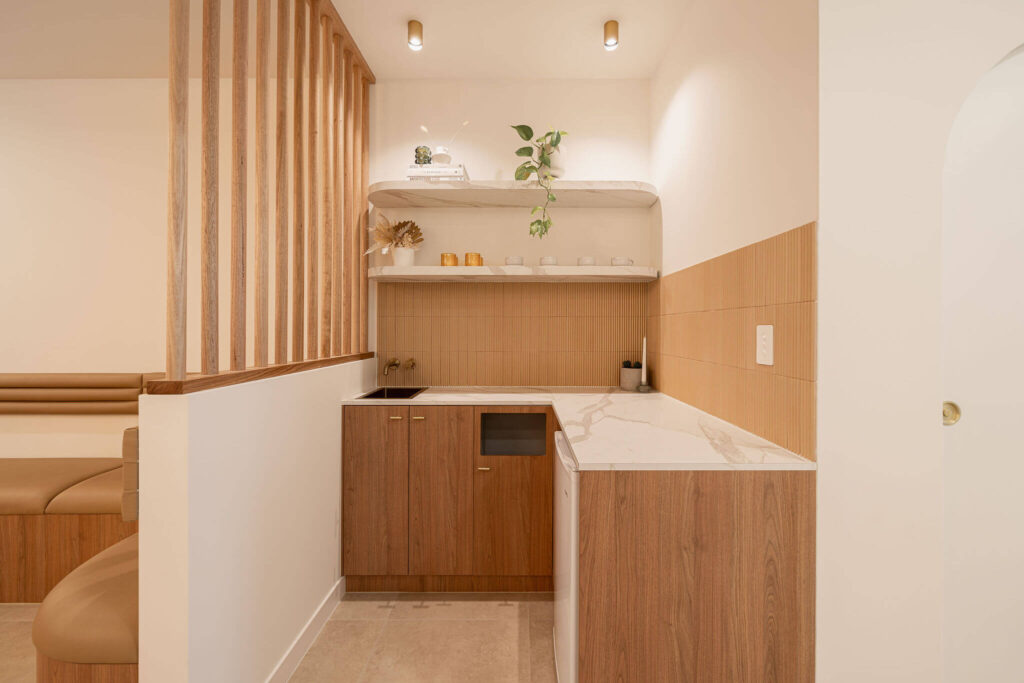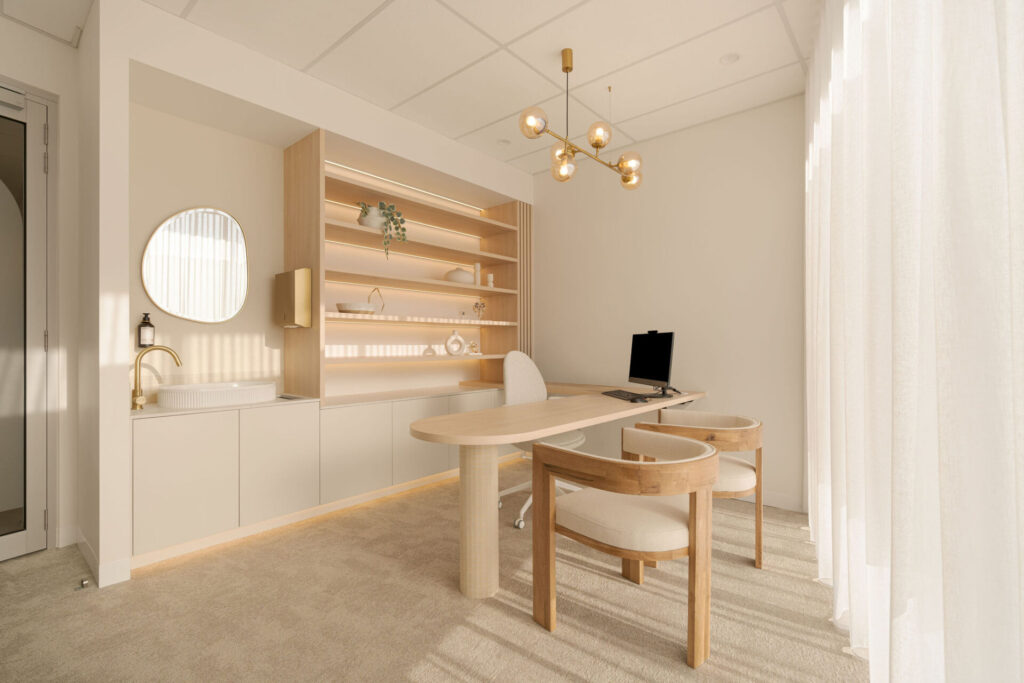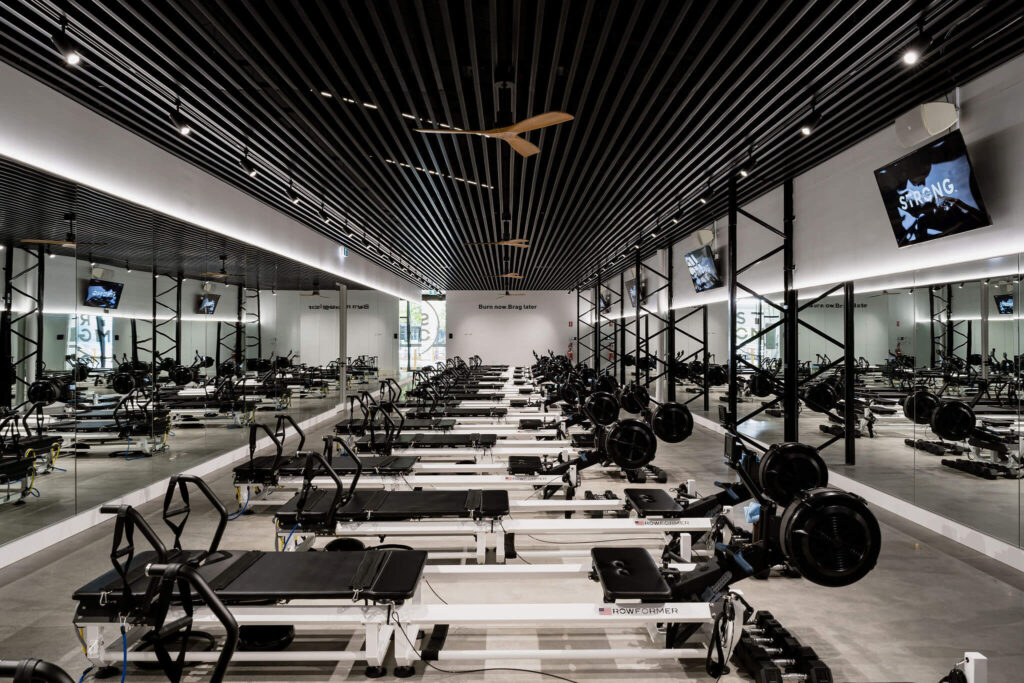2025 Pricing Per Square Meter (M²) for Fitouts in Australia
When planning a commercial fitout, one of the biggest questions businesses face is cost. Understanding the price per square meter (m²) for different types of fitouts across various industries in Australia provides a crucial foundation for budgeting. Commercial fitout costs can vary considerably depending on several factors, such as location, design complexity, material quality, and customisation needs. In this guide, we’ll explore the current pricing trends for 2025, breaking down approximate costs per square meter for fitouts across different industries and examining the factors that influence these prices.
Introduction to Commercial Fitout Costs in Australia
A commercial fitout is the process of turning an empty or outdated space into a functional, attractive environment tailored to the specific needs of a business. Fitouts are especially common in sectors like hospitality, retail, healthcare, and corporate office environments, where aesthetics and functionality both play a key role. The cost of a fitout is often measured in price per square meter, which provides an essential starting point for businesses to gauge initial expenses and make informed decisions before moving forward with their projects.
Understanding commercial fitout costs per square meter allows business owners and project managers to make informed choices regarding the type of fitout, quality of materials, and necessary customisation. Fitouts in Australia can differ significantly in price due to the unique demands of each industry and region, so it’s essential to consider a wide range of factors when estimating costs.

Factors Influencing Commercial Fitout Costs per Square Meter
Several core factors influence the price of a commercial fitout, often making it challenging to arrive at a precise estimate. However, knowing these factors can help businesses better plan their budgets and avoid potential cost overruns. The main factors impacting fitout costs include:
- Location: Fitouts in major urban centers like Sydney, Melbourne, and Brisbane generally have higher costs due to increased labor rates and the cost of materials. Regional areas, in contrast, may have lower fitout costs, though these savings can be offset by logistical expenses such as transporting materials or labor to more remote locations.
- Type of Fitout: Fitouts vary in complexity and cost. For instance, a high-end, premium fitout with intricate finishes and custom furniture will be far more expensive than a basic fitout with simpler design elements.
- Size of the Space: The larger the space, the higher the overall cost; however, economies of scale can sometimes help reduce the per-square-meter price when materials are purchased in bulk, or labor is optimised across a larger project.
- Industry-Specific Requirements: Different industries have specific requirements that can significantly impact costs. For example, healthcare fitouts require sterile conditions and specialised equipment, whereas hospitality spaces may require commercial-grade kitchens and sophisticated ventilation systems.

Pricing Per Square Meter (M²) for Fitouts in Australia
Here’s a breakdown of the approximate price range per square meter (m²) for commercial fitouts in different industries, highlighting the unique needs of each sector.
Hospitality (Restaurants, Cafes, Bars)
- Cost Range: $2,500 – $4,000+ per m²
- Details: Commercial hospitality fitouts tend to be more expensive due to the industry’s high standards for kitchens, safety, and commercial design. Costs are driven by the need for specialised kitchen equipment, high-end finishes, and compliance with health regulations. Additionally, ventilation and commercial-grade appliances add to the expense, particularly for spaces with open kitchens or bar areas.

Medical (Clinics, Dental, Allied Health)
- Cost Range: $1,800 – $3,500+ per m²
- Details: Commercial medical fitouts involve specialised equipment, sterile environment requirements, and accessibility compliance. To meet healthcare standards, these fitouts often require anti-bacterial finishes, precise HVAC systems, and ergonomic layouts, all of which increase costs. Accessibility features, such as wheelchair-friendly facilities, are also essential, adding to the overall budget.

Retail (Shops, Boutiques)
- Cost Range: $1,500 – $3,000+ per m²
- Details: Commercial retail fitouts range in cost depending on customisation and the brand’s aesthetic requirements. Retail spaces often incorporate unique design elements and high-quality finishes to align with the brand’s identity. Unlike hospitality or medical fitouts, retail projects generally have fewer regulatory requirements, though they can still be complex depending on the level of customisation.

Beauty & Wellness (Salons, Spas)
- Cost Range: $1,800 – $3,500+ per m²
- Details: Commercial wellness and beauty fitouts include high-end finishes, custom joinery, extensive plumbing, and ambience features such as lighting and acoustics. For salons and spas, the atmosphere plays a vital role in the customer experience, making it worth investing in premium finishes, calming lighting, and sound control for a peaceful environment.

Fitness (Gyms, Studios)
- Cost Range: $1,000 – $2,500+ per m²
- Details: Commercial fitness fitouts are often less costly than other industries, as they prioritise durable flooring, proper ventilation, and specialised equipment over aesthetic elements. Fitness spaces like gyms and yoga studios require practical layouts with resilient surfaces, ventilation systems, and often, open-plan commercial designs. The lack of intricate finishes keeps costs relatively lower compared to sectors with more custom design needs.

Office (Workspaces, Corporate)
- Cost Range: $1,200 – $3,000+ per m²
- Details: Commercial office fitouts can vary considerably based on layout and design preferences. An open-plan office with minimal private spaces will generally cost less than a corporate setup with meeting rooms, executive offices, and advanced tech infrastructure. Premium finishes, ergonomic furniture, and modern design elements can drive up costs, especially in large corporate fitouts where branding and aesthetics are crucial.

Typical Expenses Involved in a Commercial Fitout
In addition to the price per square meter, commercial fitouts come with a range of associated expenses that are essential to budget for:
- Construction Costs: This includes building walls, flooring, ceilings, and other structural elements required to create the base layout. Construction costs vary based on material choices, layout complexity, and the need for custom designs.
- Furniture & Fixtures: Depending on the business’s needs, furniture and fixtures can be standard or highly customised. Retail spaces, for instance, may require unique shelving units or display cases, while offices may need ergonomic desks and chairs.
- Mechanical & Electrical Systems: Proper HVAC systems, lighting, and electrical wiring are crucial for functionality, comfort, and compliance. Complex fitouts, such as those for hospitality and healthcare, require advanced mechanical and electrical systems that can drive up costs.
- Compliance & Safety Requirements: Fire safety, accessibility, and other compliance factors must meet local and national standards. Costs vary depending on the industry; medical and hospitality fitouts, for example, face more rigorous regulations compared to a retail or fitness fitout.

Additional Considerations for Commercial Fitouts
To further refine your commercial fitout budget, consider these important factors:
- Project Management Fees: Engaging a professional project manager can help keep the interior fitout on schedule and within budget. While this service involves additional fees, the expertise can lead to long-term savings and a smoother process.
- Timeframe: The timeline for a fitout can impact costs significantly. A rush project may incur additional labor costs or expedited shipping for materials, whereas a longer timeline allows for standard scheduling and potentially lower expenses.
- Sustainability Options: Incorporating eco-friendly materials and energy-efficient systems may increase upfront costs, but they offer long-term savings and environmental benefits. Sustainable choices, such as low-VOC paints or solar-powered lighting, may also appeal to clients and consumers who value green business practices.

How to Estimate and Plan for Your Commercial Fitout Budget
When estimating your interior fitout costs, keep these strategies in mind to help manage your budget effectively:
- Get Accurate Quotes: Request itemised quotes from several contractors to understand the cost of each project component, such as construction, materials, and furniture. This will also help identify any hidden expenses that might arise.
- Budget for Contingencies: Set aside an additional 10-15% of your budget to cover unexpected costs, such as delays or price increases for materials.
- Consult with Experts: Partnering with experienced professionals in the commercial fitout industry can provide valuable insights and recommendations specific to your project. Architects, commercial designers, and project managers can help balance aesthetics with functionality, ensuring that the final fitout aligns with both your vision and budget.

Knowing the average cost per square meter for commercial fitouts in Australia is key to creating a realistic budget and project plan. Fitout costs vary significantly across industries, with commercial hospitality and medical fitouts on the higher end of the spectrum, while commercial fitness fitouts and commercial office spaces can be more cost-effective. Additional factors, such as location, commercial design requirements, and regulatory standards, play a vital role in determining final costs.
To make the most of your investment, consult with experienced professionals who can offer tailored solutions and guide you through the entire fitout process. Engaging industry experts, like Total Fitouts, can ensure that your commercial fitout meets both functional and aesthetic goals, delivering a space that supports your business’s success.





